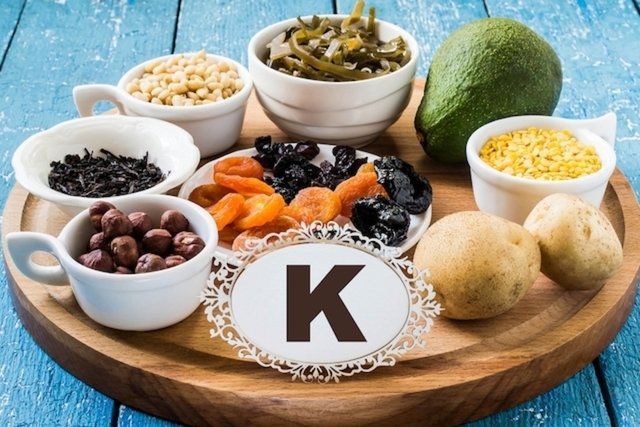Foods that are high in potassium, such as avocados, Brazil nuts, Brussels sprouts and lentils, can play a role in preventing muscle weakness and muscle cramps during intense physical exercise.
Eating foods that are rich in potassium can also complement treatment for hypertension, as these foods help to regulate blood pressure by increasing sodium excretion through the urine.
Potassium is mainly found in plant-based foods such as fruits and vegetables. The recommended daily amount of potassium for adults is 4700 mg per day, which can be easily achieved through diet.

Potassium-rich foods
The following table outlines foods that have the highest amount of potassium:
How to reduce potassium content in foods
To reduce potassium in foods, the following steps must be followed:
- Peel and cut the food into thin slices and then rinse
- Place the food in a pot filled with water and soak for 2 hours
- Drain, rinse and drain the food again (this procedure can be repeated 2 to 3 times)
- Fill the pot with water again and cook
- Once cooked, drain the food and throw away the water.
This method is also recommended for people who have kidney problems and who are undergoing hemodialysis or peritoneal dialysis, as these conditions are associated with high potassium levels in the blood. This method can make eating high-potassium foods safer, without leading to high blood potassium levels.
Recommended daily amount
The amount of potassium that should be ingested in a day varies according to age, as shown in the following table:
Low potassium levels, also referred to as hypokalemia, can lead to a loss of appetite, cramps, muscle paralysis or confusion. This situation can occur in cases of vomiting or diarrhea, or when diuretics or high blood pressure medications are taken. Although is it less common, low potassium levels can also affect athletes who sweat a lot.
Excess potassium is also rare but can happen especially when taking blood pressure medications. This is a dangerous finding as it can lead to arrhythmias.
